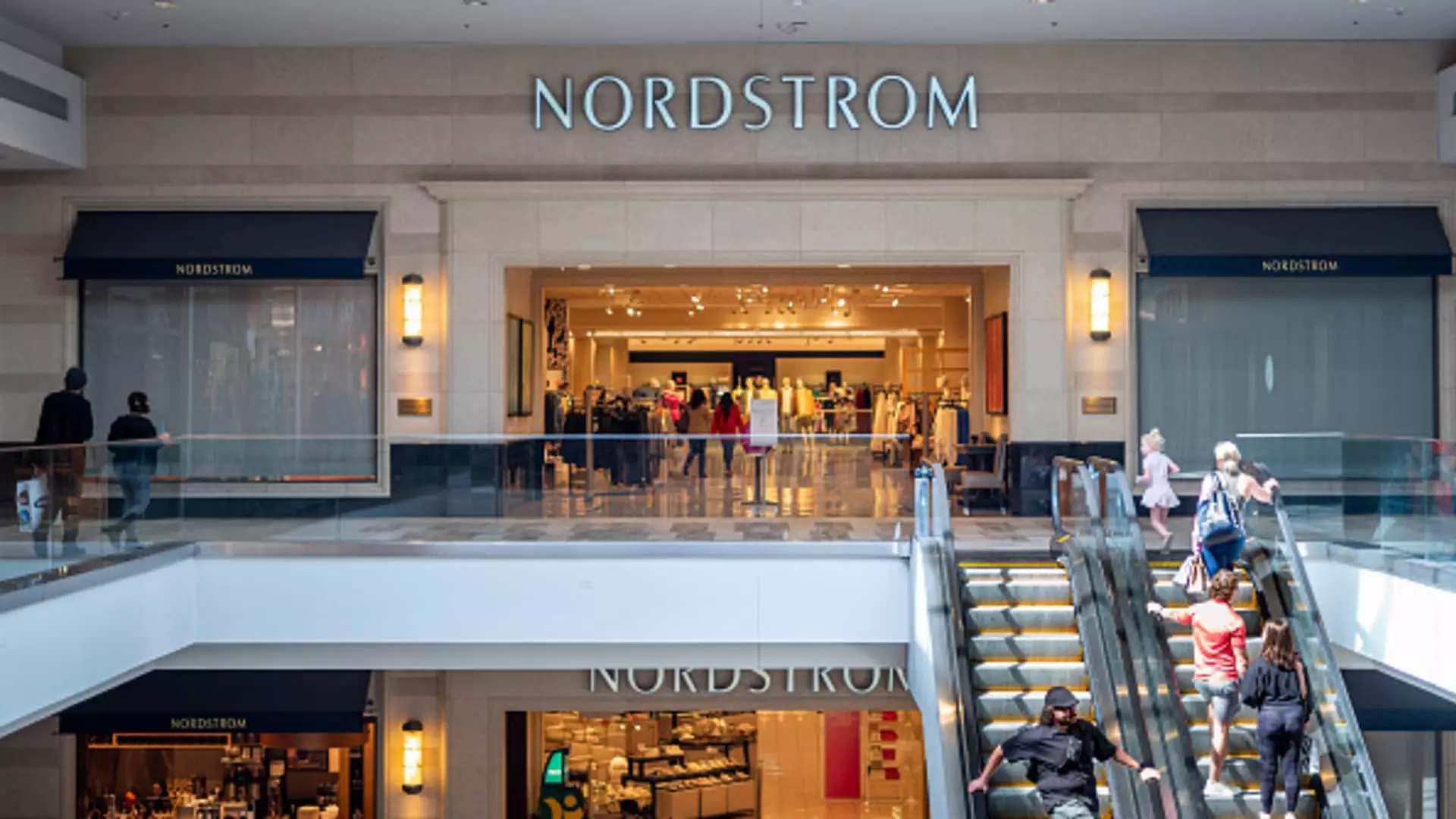Nordstrom’s Optimism Amid Shifting Retail Landscape: A Deep Dive

In a notable departure from its earlier predictions, Nordstrom has raised its full-year sales outlook following a more vigorous-than-expected performance during the holiday shopping season. This news arrives as the Seattle-based department store prepares for significant changes, particularly with the impending private buyout by the founding family alongside Mexican retailer El Puerto de Liverpool. This shift brings about questions regarding the company’s long-term strategy in an increasingly competitive retail environment.
The retailer now anticipates revenue growth between 1.5% and 2.5%, a modest increase when compared to its prior forecast of stagnation or a slight year-on-year uptick of up to 1%. This revision underscores a positive outcome resulting from holiday sales that exceeded cautious projections, which had accounted for a potential decline in consumer interest during the latter part of the fiscal quarter. Even as sales expectations improve, Nordstrom maintains a conservative stance regarding profitability, keeping its earnings guidance consistent.
During this year’s holiday period, which concluded on January 4, net sales showed a promising increase of 4.9%, and comparable sales—a more stable metric that adjusts for store openings and closures—rose 5.8% compared to the previous year. Delving deeper into these figures reveals that Nordstrom’s flagship operations recorded a 3.7% increase in net sales, paired with a robust 6.5% rise in comparable sales figures. Meanwhile, Nordstrom Rack, the company’s off-price division, outperformed the flagship brand with a 7.4% increase in net sales and a 4.3% rise in comparable sales.
These trends not only reflect the effectiveness of Nordstrom’s promotional strategies during the holiday season but also emphasize a resilience in consumer behavior, particularly in the context of rising inflation and shifting spending priorities. CEO Erik Nordstrom attributed the upbeat sales outcomes to their competitive positioning within the market and a strong product offering, suggesting that strategic adaptability played a significant role in attracting shoppers.
As Nordstrom’s performance sheds light on consumer spending habits, the broader retail landscape begins to take shape, with early indications pointing toward a healthier-than-expected holiday season across various retail sectors. Online shopping, specifically, has surged, with reports indicating a nearly 9% year-on-year growth in online spending during the crucial holiday shopping window, resulting in over $241 billion in total sales. Additionally, industry-wide retail sales, excluding automotive transactions, have reported a respectable 3.8% increase during the same period.
With major retailers like Walmart and Macy’s also gearing up to announce their earnings, investors are keenly awaiting a clearer picture of consumer sentiment and retail performance amidst economic uncertainties. These forthcoming reports will play a pivotal role in shaping market expectations and strategy adjustments going forward.
As Nordstrom embarks on a new chapter with the proposed private buyout, it is essential to consider how this will influence the company’s operational strategies and market positioning. The buyout, estimated at approximately $6.25 billion, has been sanctioned by the board of directors and is expected to finalize in early 2025. This transition could provide Nordstrom with the agility to restructure and adapt more effectively to the unpredictable retail landscape, free from the pressures of public market scrutiny.
However, this significant shift also raises questions about the commitment to innovation and customer engagement that are crucial in a rapidly evolving marketplace. Stakeholders will be closely monitoring how leadership manages this transition while ensuring sustained growth and relevance in an industry that demands flexibility and forward-thinking strategies.
Nordstrom’s recent sales outlook revision showcases the company’s potential, yet it simultaneously highlights the unpredictability of the retail environment. As consumers’ preferences continue to evolve—bolstered by technological advances and changing economic conditions—the brand’s future will hinge on how well it can navigate these complex dynamics. The upcoming changes due to the private buyout could provide the latitude needed for reinvention, but success in this endeavor will require an unwavering focus on consumer needs, innovative offerings, and adaptive business practices. As the retail world awaits further results from major players, all eyes will be on how Nordstrom balances change with growth in a landscape fraught with challenges and opportunity.





